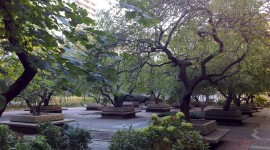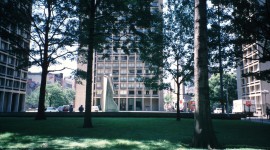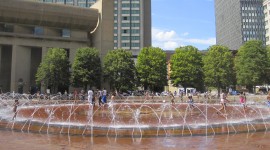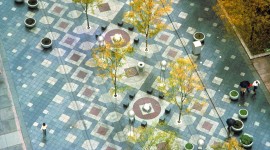Washington Square Village
Designed by: Sasaki Walker & Associates

The 1 ½-acre roof garden at Washington Square Village, sited between two 17-story apartment buildings housing more than 1,200 families, is an oasis within the busy Greenwich Village area of New York City. Completed in 1959, the design is an early project for a firm strongly associated with the Modern movement and displays an exceptional harmony of architecture, landscape architecture, and art. Today, the modernist design is threatened by the current owner’s proposal to insert a series of buildings, ranging from five to twenty stories, into the garden spaces.
History
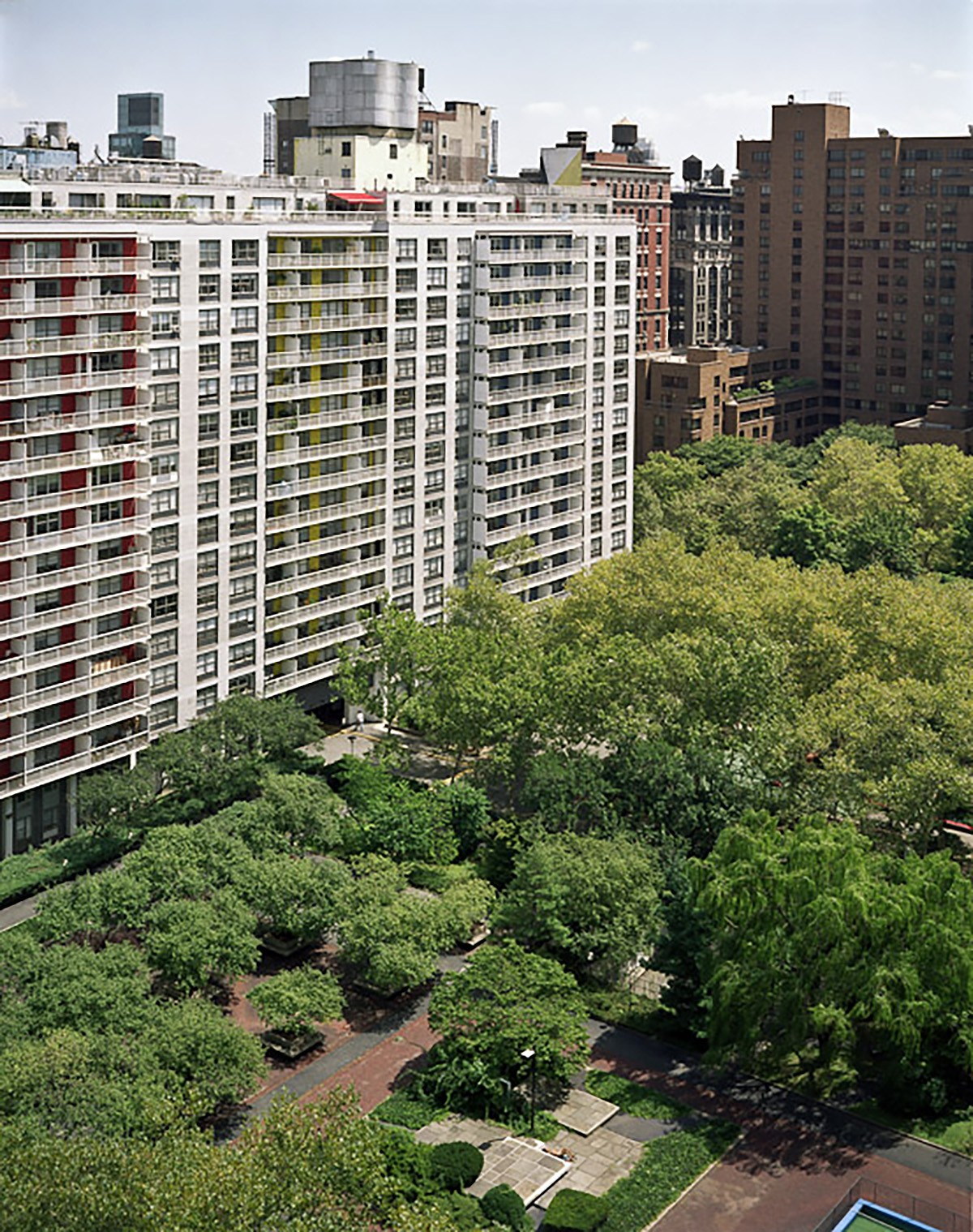
Completed in 1959, the 1 ½-acre garden at Washington Square Village was one of the first parking structure roof gardens in the country. The garden sits between two 17-story, rectangular apartment buildings housing more than 1,200 families, serving as an oasis in the busy Greenwich Village area of New York City,
The firm Sasaki, Walker and Associates designed the garden at Washington Square Village. Jose Luis Sert, dean of the Harvard School of Design while Sasaki was a teacher there, recommended the firm. Sert’s former partner, Paul Lester Weiner, was the consulting designer for the project, which was based on the Tower-In-The-Park approach to urban housing made famous by Weiner’s former partner, Le Corbusier. The twin Washington Square Village buildings bookend the garden, which is both protected by the buildings and offers relief from their expanse and height.
Washington Square Village fills one of two “superblocks” created in the 1950s by combining the blocks from Mercer Street to LaGuardia Place and from Houston Street to West Third Street, with Bleecker Street running between. The south superblock features a trio of high towers designed by Pei, Cobb and Partners. The buildings facing Washington Square Village span the north superblock from east to west and feature dramatic vertical panels of primary-color glazed bricks. Between the buildings is the secluded garden on the west side and a colorful playground to the east, creating open and play space in an extremely high-density area.
Historically, the Washington Square Village garden is an excellent example of a successful integration of landscape and hardscape in an urban setting. Japanese crabapple, higan cherry, willow trees and other plantings attract songbirds as well as the people who enjoy the colorful, seasonal displays. In the summer, alléesof London plane trees provide shade, azaleas offer dramatic color and Chinese Juniper and English Ivy keep the entire garden green between the asphalt and herringbone-brick paths and the Ivy reaches up the trellises and pergolas. The plantings offer autumn color that harmonizes with the glazed brick buildings, and the evergreens keep nature present throughout winter. The hardscape features multiple levels of platforms and seating areas, with rectilinear shapes that reflect the buildings around the garden yet are softened by the varied heights of the plantings.

When Sasaki passed away in 2000, both the New York Times and Los Angeles Times’ obituaries referenced the importance of the Washington Square Village garden as a working, enduring landscape. Today, more than five decades after its construction, the garden continues to provide a refuge from the dense cityscape for the residents of Washington Square Village and the surrounding neighborhood.
Threat
Open space is a crucial element of Tower-In-The-Park design, and the Washington Square Village garden is an essential part of the overall superblock’s design from an architectural, landscape and social perspective.
New York University (NYU), current owner of the Washington Square Village complex, has proposed adding additional buildings to the superblocks as part of their “Plan 2031” to add approximately 6 million square feet of built space to Greenwich Village and the surrounding area. NYU has published plans that propose a five-story building and two-story plinth replacing the Sasaki-designed garden, and a 20-story building to replace the children’s playground to the east of the garden. Such insertions would enormously affect the light and air circulation within the garden, dramatically changing the existing plantings’ environment and ruining its role in social interaction.
Get Involved
Supporters are encouraged to write the President of NYU, and copy the Councilmember for the affected district and the Manhattan Borough President, and let him know that destroying the Sasaki-designed garden or overshadowing it with a tower to the east is unacceptable. Copies to the Greenwich Village Society for Historic Preservation will help preservationists keep track of the correspondence and build a case for protecting this significant landscape.
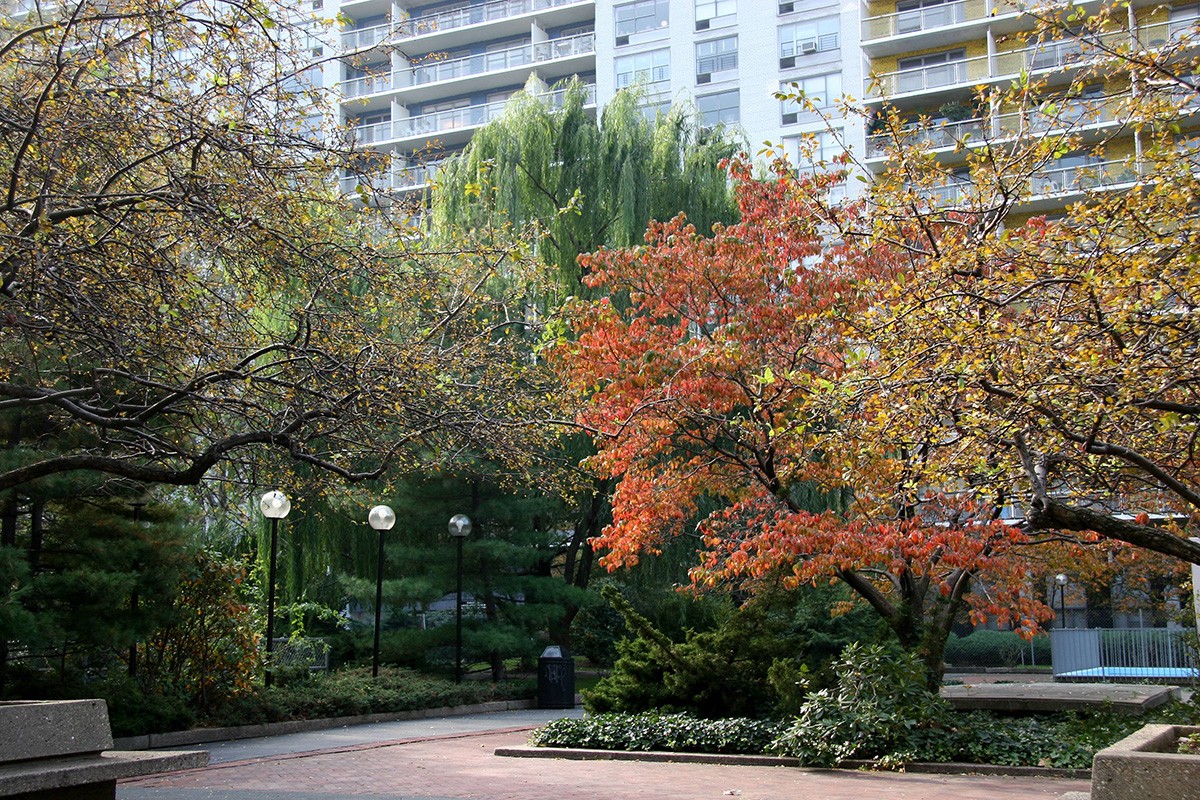
John Sexton
President, New York University
Bobst, 70 Washington Square South, 1216
New York, New York (US) 10012
Tel: (212) 998-2345
john.sexton@nyu.edu
Greenwich Village Society for Historic Preservation
232 East 11th Street
New York, NY 10003
Tel: 212-475-9585
gvshp@gvshp.org
Learn More
Washington Square Village
New York, NY 10012
Print Resources
Ellen Jouret-Epstein. “The Garden at Washington Square Village.” Master’s thesis. University of Massachusetts, Amherst: 1998.




